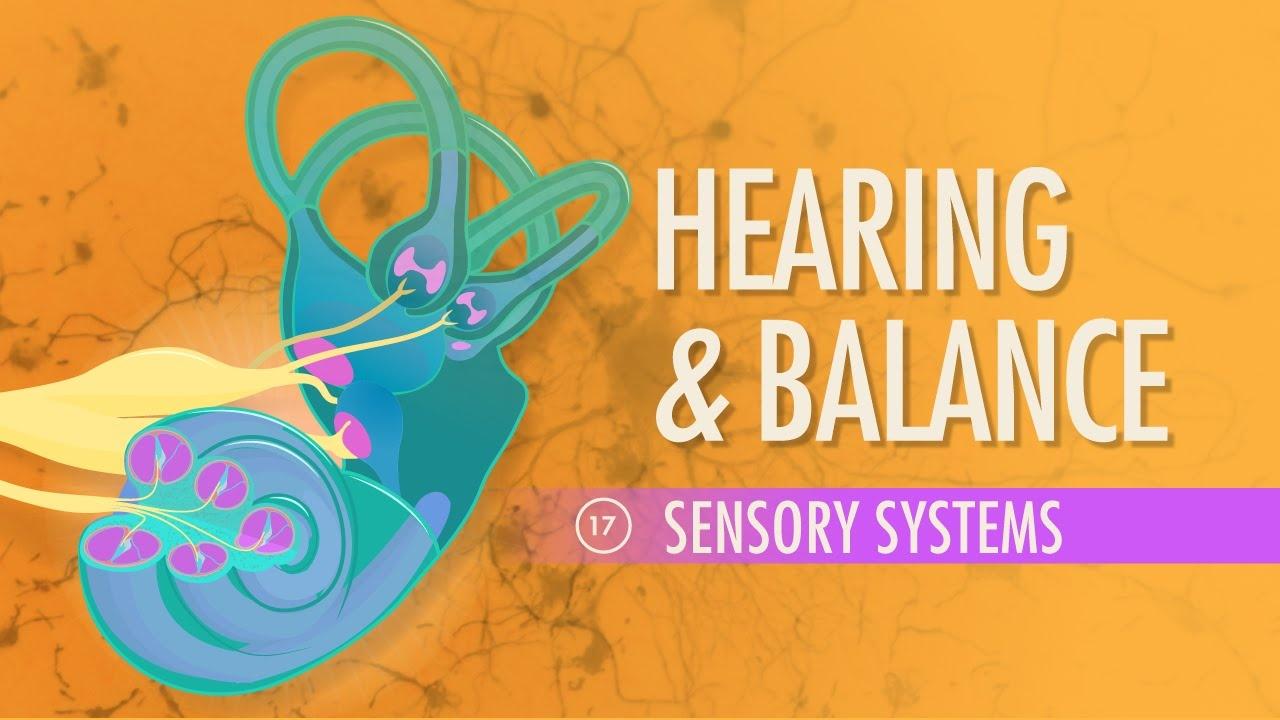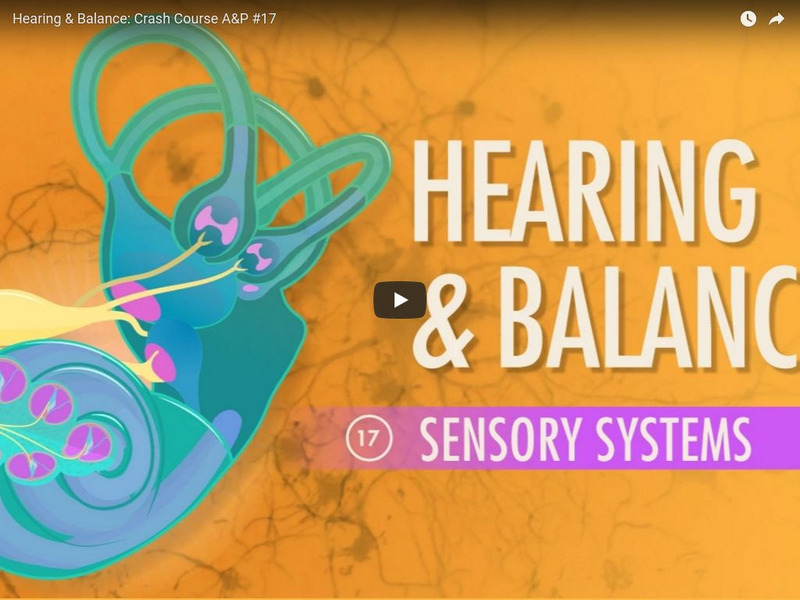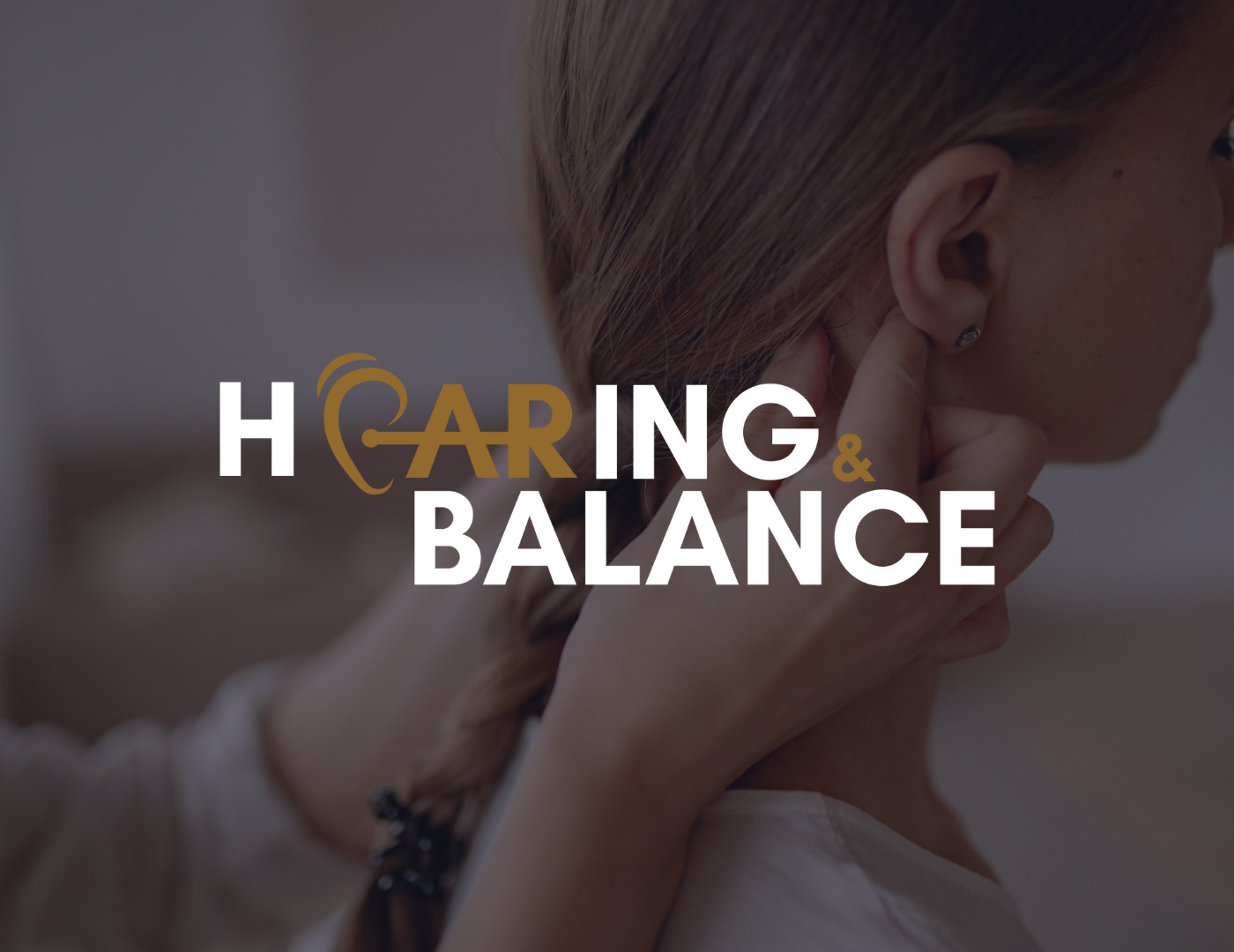Hearing & Balance Crash Course A&p #17

Ever wonder how you manage to stand upright without face-planting? Or how you can tell the difference between a guitar riff and someone yelling your name from across the room? It’s all thanks to your amazing hearing and balance systems!
Diving Headfirst (Not Literally!)
Get ready for a whirlwind tour of your inner ear! Think of it as a miniature, incredibly complex theme park. It’s packed with rides (sort of) that translate sound and movement into information your brain can understand.
This isn't your average anatomy lesson. Forget boring textbooks! We're talking interactive diagrams, quirky explanations, and maybe even a few sound effects. Prepare to be amazed by the sheer ingenuity of your body.
The Sound Detectives
First up, let's talk about hearing. Sound waves enter your ear canal and tickle your eardrum. This sets off a chain reaction involving tiny bones with hilarious names. These bones amplify the sound and pass it along to the cochlea.
The cochlea is a spiral-shaped, fluid-filled structure that's lined with thousands of tiny hair cells. These hair cells are like miniature sound detectors, each tuned to a different frequency. When a sound wave hits the right hair cell, it sends an electrical signal to your brain.
Your brain then interprets these signals as sounds. Pretty cool, right? The sheer complexity of how we hear is astounding.
Balance Bonanza
Now, let’s talk about balance. This is where things get really interesting! Your inner ear contains a structure called the vestibular system. This system is responsible for detecting movement and orientation.
The vestibular system is made up of three semicircular canals and two otolith organs. The semicircular canals detect rotational movements, like turning your head. The otolith organs detect linear movements, like moving forward or backward.
These structures are filled with fluid and lined with hair cells, just like the cochlea. When you move your head, the fluid sloshes around, bending the hair cells. These hair cells then send signals to your brain about your movement.
Why This is Seriously Fun
Okay, anatomy might sound dry. But this deep dive isn't like your high school biology class. Imagine a fast-paced, engaging exploration of the incredible machinery inside your head.
The explanations are clear, concise, and even a little bit funny. Think analogies, diagrams, and real-world examples. It's designed to make complex concepts easy to grasp.
Plus, understanding how your hearing and balance systems work can help you appreciate the world around you in a whole new way. It also gives you a greater understanding of your own body.
Think About It!
Learning about your auditory and vestibular systems isn’t just about memorizing fancy terms. It’s about understanding how you experience the world. How you navigate space. How you connect with others.
Consider how dizziness affects you. Now you'll understand which part of the system is not working well! It can even make you appreciate the simple act of walking down the street!
So, are you ready to unlock the secrets of your inner ear? Prepare to have your mind blown! This isn't just learning; it's an adventure into the amazing world within.


.png)















